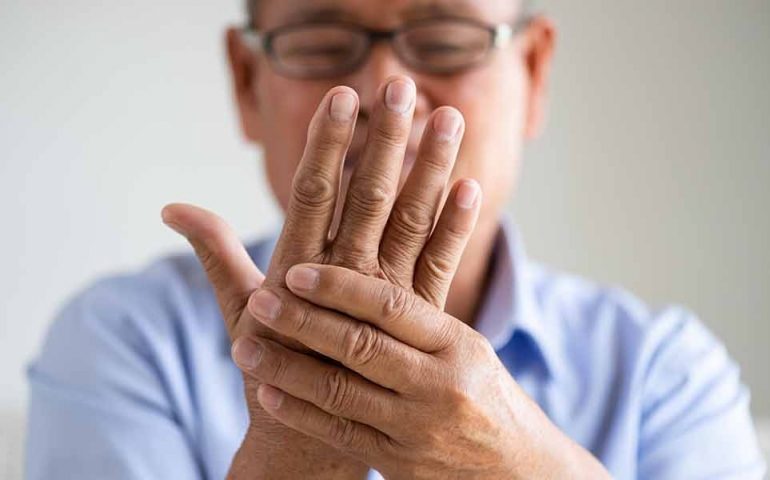
Parkinson's Disease
Parkinson’s Disease: Definition, Types, Symptoms, and Treatments
Parkinson’s disease is a chronic and progressive neurological disorder that affects the central nervous system. In this article, we will discuss the definition, types, prevalence, predisposing factors, symptoms, relationships with other diseases, treatment methods, and more of Parkinson’s disease.
Definition of Parkinson’s Disease: Parkinson’s disease is a neurodegenerative disorder that primarily affects the brain regions responsible for movement control. The loss of dopamine-producing cells makes movement control difficult and can result in symptoms such as tremors, slowed movements, stiffness, and more.
Types of Parkinson’s Disease: There are two main types of Parkinson’s disease: primary and secondary parkinsonism. Primary parkinsonism typically occurs for unknown reasons, while secondary parkinsonism can develop as a result of another disease (e.g., tumor or infection).
Prevalence of Parkinson’s Disease: Parkinson’s disease is a relatively common neurological disorder worldwide. Its prevalence increases with age, being more common in individuals over the age of 60, although it can also develop in younger years.
Predisposing Factors for Parkinson’s Disease: Genetic and environmental factors influence the susceptibility to Parkinson’s disease. Family history, age, gender, and exposure to toxins can increase the risk.
Symptoms of Parkinson’s Disease: The primary symptoms of Parkinson’s disease include tremors (especially at rest), slow movements (bradykinesia), muscle stiffness (rigidity), and balance problems. Additionally, reduced facial expression, speech difficulties, and trouble with writing can occur.
Parkinsonism and Relationships with Other Diseases: The term “parkinsonism” describes other diseases that exhibit similar symptoms to Parkinson’s disease. For example, drug-induced “drug-induced parkinsonism” or “Parkinson Plus Syndromes” fall into this category.
Treatments for Parkinson’s Disease: The treatment of Parkinson’s disease aims to reduce the severity of symptoms. Methods include medication treatment, surgical interventions, and physical therapy.
Medication Treatment: Levodopa is a medication commonly used in the fundamental treatment of Parkinson’s disease. It increases dopamine levels and alleviates symptoms. Dopamine agonists, MAO-B inhibitors, and anticholinergic drugs can also be used in treatment.
Surgical Treatment: Deep brain stimulation (DBS) is a surgical option. Electrodes are implanted into specific brain areas and send regular electrical signals to alleviate symptoms.
Physical Therapy Applications: Physical therapy can help increase patients’ mobility and reduce muscle stiffness. Exercise programs and physiotherapy are common methods.
Parkinson Plus Syndromes: Parkinson Plus Syndromes are more severe diseases that exhibit similar symptoms to Parkinson’s disease but respond less effectively to treatment. These syndromes include Multiple System Atrophy (MSA) and Progressive Supranuclear Palsy (PSP).
Prognosis of Parkinson’s Disease: The progression of Parkinson’s disease varies individually. Early diagnosis and appropriate treatment can alleviate symptoms, but the disease can progress over time and impact the quality of life.
Dementia Types and Treatments in Parkinson’s: As Parkinson’s disease progresses, dementia can develop in some patients. Types such as Lewy Body Dementia (LBD) and vascular dementia can occur. Treatment may aim to manage the symptoms.
Pathogenesis of Parkinson’s Disease: The exact cause of Parkinson’s disease is not fully understood yet, but factors like the loss of dopamine-producing cells and the abnormal accumulation of the protein alpha-synuclein may play a role.
Genetic Parkinson’s Types: Some cases of Parkinson’s have a genetic basis. Gene mutations such as LRRK2, SNCA, and Parkin can increase susceptibility to Parkinson’s.
Physical Therapy in Parkinson’s: Physical therapy can aid in managing Parkinson’s disease symptoms. Movement exercises, balance training, and physiotherapy can be part of this treatment approach.
Apomorphine Treatment: Apomorphine treatment can be used in Parkinson’s patients during “off” periods, when symptoms are more pronounced. This treatment can increase mobility and improve quality of life.
Levodopa/Carbidopa Intestinal Gel Treatment: In this treatment method, levodopa/carbidopa is administered in the form of a gel in the small intestine. This allows for faster absorption of the medication and a more stable effect.
Questions and Answers:
- How is Parkinson’s disease defined?
- Parkinson’s disease is a neurodegenerative disorder that primarily affects brain areas responsible for movement control.
- What are the symptoms of Parkinson’s disease?
- Tremors, slow movements, muscle stiffness, and balance problems are the main symptoms of Parkinson’s disease.
- What are Parkinson Plus Syndromes?
- Parkinson Plus Syndromes are more severe diseases that exhibit similar symptoms to Parkinson’s disease but respond less effectively to treatment.
- How is Parkinson’s disease treated?
- Parkinson’s disease can be treated with medications, surgical interventions, and physical therapy.
- What is the pathogenesis of Parkinson’s disease?
- The exact cause of Parkinson’s disease is not fully understood yet, but the loss of dopamine-producing cells and the abnormal accumulation of the protein alpha-synuclein play a role.
In this article, we have discussed Parkinson’s disease in terms of definition, types, symptoms, treatments, and more. The insights of Alanya Neurology Specialist Dr. Mustafa Zafer Demirtaş are an important guide in this matter.




